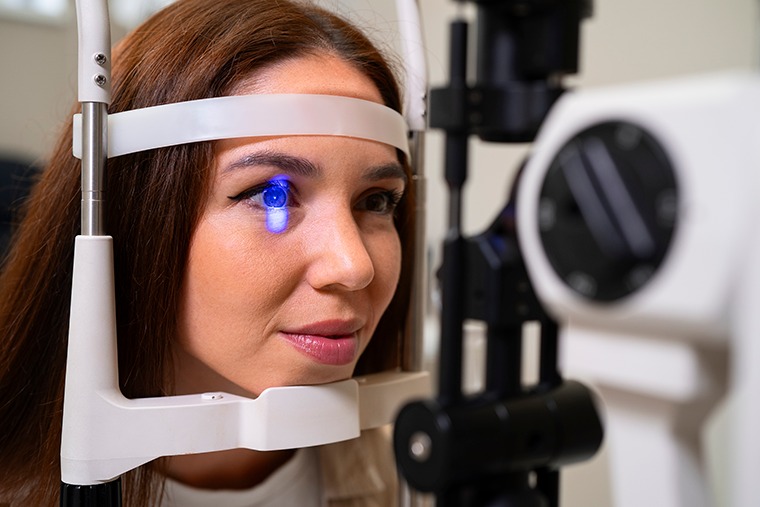Retinal Damage in Myopia: Risks and Strategies for High Myopia Patients
July 29, 2024
Have Any Questions?
Please contact us, if you have any queries
Categories
Myopia, also known as near-sightedness, is a common eye condition in which people can see close objects clearly but distant objects appear blurry. Myopia occurs when the eyeball is too long or the cornea (the clear front part of the eye) is too curved, causing light to focus in front of the retina instead of on it.
Myopia is a progressive condition, meaning that it can worsen over time. High myopia, defined as having a prescription of -6.00 diopters (D) or higher, is associated with an increased risk of retinal damage.

How does myopia cause retinal damage?
The retina is a light-sensitive tissue that lines the back of the eye. It contains millions of photoreceptor cells that convert light into electrical signals that are sent to the brain. The brain then interprets these signals to create images.
In high myopia, the elongation of the eyeball can cause the retina to stretch and become thinner. This can lead to a number of retinal problems, including:
- Retinal detachment: This is a serious condition in which the retina separates from the choroid, the layer of blood vessels that nourishes the retina. Retinal detachment can cause permanent vision loss.
- Myopic macular degeneration: This is a condition that damages the macula, the central part of the retina responsible for sharp central vision. Myopic macular degeneration can lead to vision loss and blindness.
- Glaucoma: This is a group of eye diseases that damage the optic nerve. Glaucoma can lead to vision loss and blindness.
Strategies for high myopia patients
There are a number of things that high myopia patients can do to reduce their risk of retinal damage, including:
- Get regular eye exams: It is important for high myopia patients to have regular eye exams to monitor for signs of retinal damage. Eye exams should include dilation of the pupils, which allows the doctor to get a better view of the retina.
- Use corrective lenses: Wearing corrective lenses, such as glasses or contact lenses, can help to focus light properly on the retina.
- Avoid smoking: Smoking can increase the risk of retinal detachment and other eye problems.
- Eat a healthy diet: Eating a healthy diet that includes plenty of fruits, vegetables, and whole grains can help to protect the retina.
- Manage underlying medical conditions: High myopia patients should also manage any underlying medical conditions, such as diabetes and hypertension.

New treatments for retinal damage in high myopia patients
There are a number of new treatments emerging for retinal damage in high myopia patients. These treatments include:
- Anti-VEGF injections: These injections can help to stop the growth of new blood vessels in the retina, which can lead to retinal detachment and other problems.
- Laser surgery: Laser surgery can be used to create small scars in the retina, which can help to strengthen it and reduce the risk of retinal detachment.
- Implantable devices: Implantable devices can be used to support the retina and reduce the risk of retinal detachment.
If you are a high myopia patient, talk to your doctor about the best way to manage your condition and reduce your risk of retinal damage.
Dr. Rani Memon’s Eye Clinic in Trissur is a leading eye care center in India that specializes in the treatment of high myopia and retinal damage. The clinic offers a wide range of services, including comprehensive eye exams, laser surgery, and implantable devices.
If you are a high myopia patient and are looking for expert care, contact Dr. Rani Memon’s Eye Clinic in Trissur.

